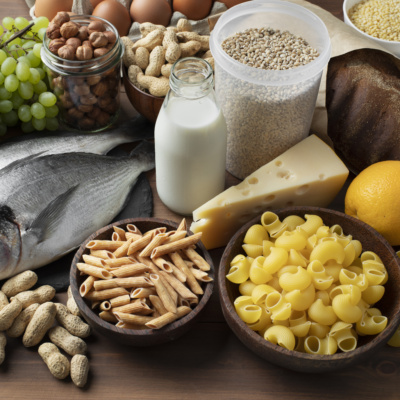What’s New: Produce Trending in 2020
Produce procurement in the winter is historically hard for operators in Foodservice and this winter is no different. With the rise of the coronavirus affecting international produce shipments, and cold and flu season in full force, consumers are turning to new ways to get vegetables (and their health benefits) on menus. And if you haven’t noticed it already, avocado and kale may find some tough competition in the next decade with curious guests turning to unique and unusual produce. Let’s take a look at a few that are starting to trend on menus.
Komatsuna
This hardy green, also referred to as Japanese mustard spinach, is actually not a spinach but a member of the Brassica family, home to cruciferous vegetables such as cauliflower, broccoli, and cabbage as well as mustards. It’s used for its tender leaves as well as the flowering stems. As the name implies, it is native to Japan where it is used in salads and stir-fries.
This health trend is high in vitamin C, calcium, beta carotene, and sulforaphane, a compound that has been shown to fight against cancer cells. Chef Tetsuo Takenaka, Kyoto’s leading specialist in the school of traditional Japanese kaiseki ryori, a cuisine that uses fresh ingredients distinctive to each season, recommends combining this green with fresh shitake mushrooms and dashi.
Mushrooms
Mushrooms are a far cry from new but what is new for 2020 is the “superfood” aspect of mushrooms and that they fit in well with the plant-based alternative to meats. This nutrient dense, versatile meat-alternative can be found in main dishes as well as small plates in all its remarkable forms including Shitake, Maitake, and Chanterelle.
Chanterelles are native to many parts of the world, including the forests of Wisconsin in the summer months. Bartolotta’s Lake Park Bistro, set in a park pavilion overlooking Lake Michigan, offers a Chanterelle Mushroom wine-pairing dinner that includes oysters in curry with chanterelles and other paired delights. This mushroom, with a distinctive mild peppery flavor, is full of vitamins and minerals including a high concentration of B vitamins, a fair share of Vitamin D—a vitamin hard to find in food—and iron.
But, wait, even more astonishing is that mushroom coffee has seen a 471 percent year-on-year spike in searches. Amazing. If you’re considering getting in on this dynamic trend, you’ll need to familiarize yourself with mushrooms such as chaga, lion’s mane, reishi, and cordyceps, medicinal mushrooms that have been used for thousands of years in traditional Chinese medicine. It looks like more and more health-conscious consumers will be trading in their morning latte for a mug of Lion’s Mane & Chaga.
Butterfly Pea Flower
Just when you thought edible flowers were entering the downside of their climb to fame, this beautiful, vibrant blue flower enters the scene. This, however, is not just any flower—it is the chameleon of the plant kingdom, changing colors when mixed with an acidic food. It is also rich in antioxidants, making it not only Instagram worthy, but a strong contender for those drawn to health-conscious cuisine. Butterfly pea flowers offer little in the way of taste but make up for it in their natural food and drink coloring properties.
Celtuce
Tyrant Farms describes celtuce as “the coolest veggie you’ve never heard of.” As the name implies, it’s a little like a celery-lettuce combo. The big, massive leaves, which are not it’s culinary prized possession, gives way to a thick, crunchy, juicy stem that Asians and others in the Mediterranean region have known about for over a thousand years.
The stem, after pealing the fibrous outer skin, is great raw or in stir fries, maintaining its crispy juiciness even after cooking!
According to the Forager Chef, Michel Bras, a world famous French chef, and his son, Sebastien, serve it at their 3-star Michelin restaurant, Bras. Of course, as their menu is an ongoing work of art, Celtuce may be a thing of yesteryear by the time you get to France and indulge in some of the region’s finest culinary creations. If you’re in search of this off-the-beaten path wonder, it’s best to look in your local Asian market. At least until we Americans catch on to its tasty offerings.
Beans
Beans have been a staple around the world for thousands and thousands of years, an estimated 9.000 years, to be exact. So, what’s new about something so old? Knorr and World Wildlife Fund put together a report on the Future 50 Foods—foods that are healthier for both people and the planet.In addition to foods that fall into the algae and cacti categories, superfood beans made the list and include black turtle, bambara, and marama—a bean that, when roasted, is said to taste like cashews—Yum.
We definitely recommend checking out the Future 50 Foods report which offers a wealth of information about unique foods from around the world that are sure to be growing in popularity as the rise of the health-conscious consumer continues to redefine the restaurant landscape.
Know Your Produce
Whether you opt for the curious and new or for the old-time favorites, it’s important to keep abreast of the market and what is happening to produce on a world scale. Dining Alliance works with produce management companies to help member operators source produce wherever they are.





